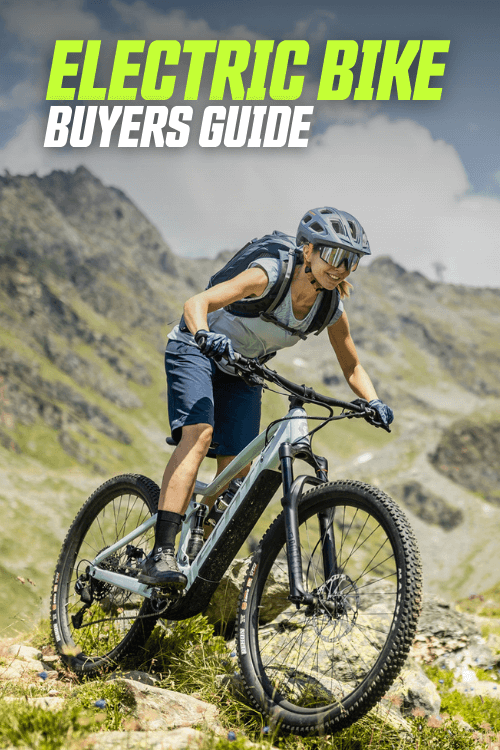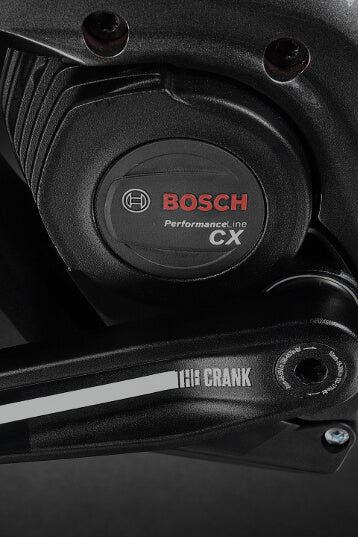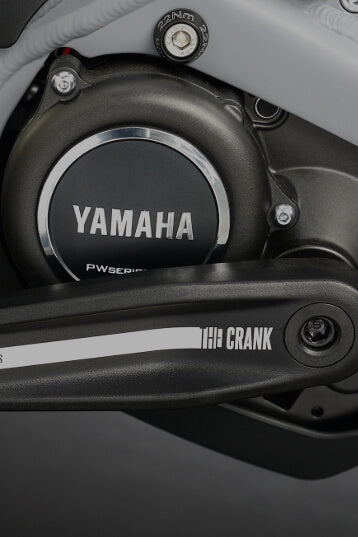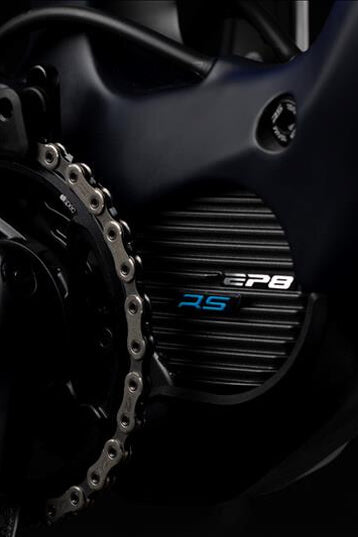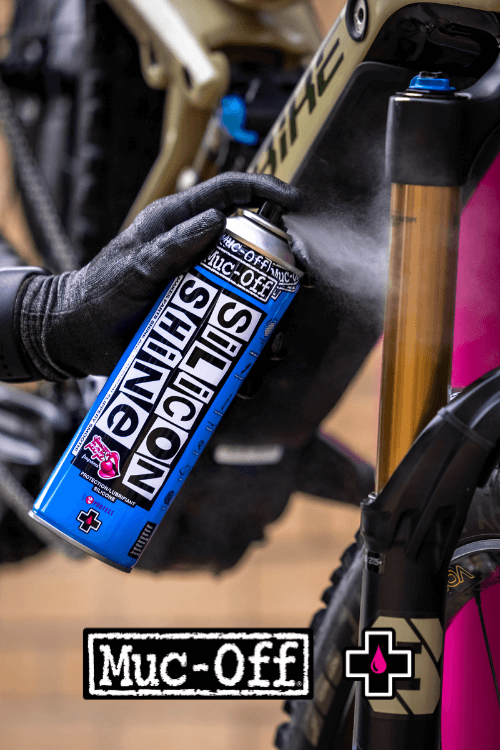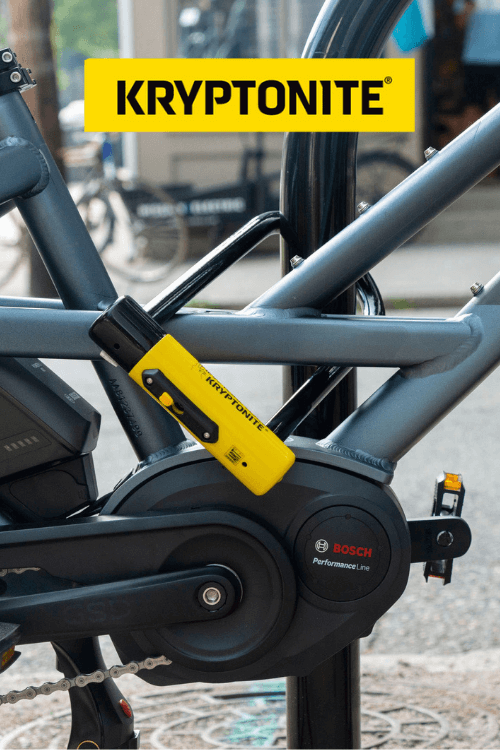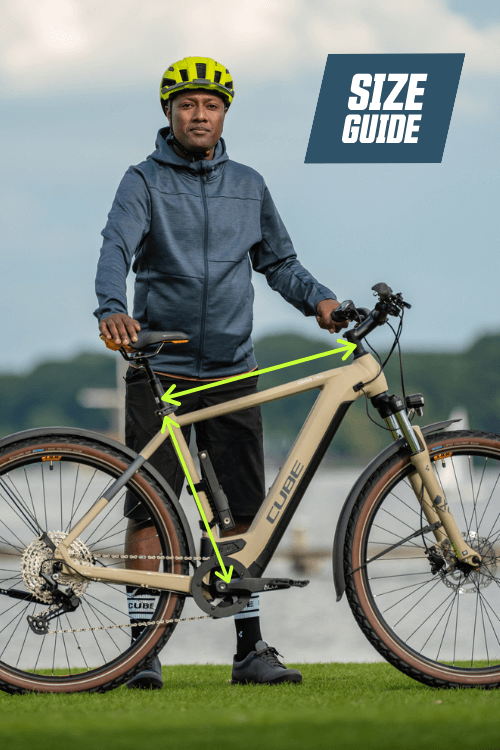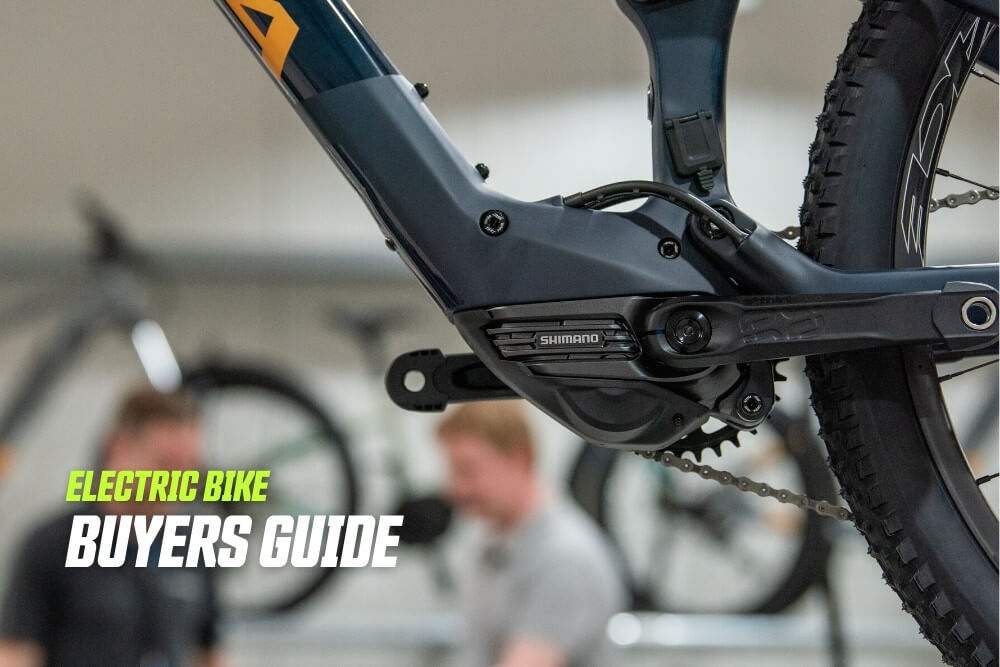
- GUIDES
The electric bike buyers guide
By Martin Brown |
With so many different styles, models & price ranges, buying an electric bike (eBike) can be a daunting process. To help you in your search, I have put together a rough guide to help you make a decision as to which eBike will be best for you.
This is the electric bike buyers guide.. Rather than overloading you with too much detail, the following words are ‘Jargon Free’ and should make sense to even the most novice of rider, it’s a simple guide to cover the important factors. There’s a lot to cover so I have broken it down into several stages:
Style of Electric Bike
Choose the right style of eBike to support your style of riding. The eBike market has grown massively over the past few years and with it a multitude of different styles, designs and purposes.
Ranging from small wheeled folding bikes to big wheeled commuters; there is just about every style of eBike the end user could require. In order to get the right eBike you will have to think very carefully about what your needs and expectations are:
- If you are looking for an eBike small enough to stick in the back of the car, a folding eBike is the answer.
- If you are commuting to work have a look at the town/commuter eBikes out there.
- For dedicated off-roaders there are various styles of eMTB’s available.
- Commuting to work during the week but also after some light off-road at the weekends? A hybrid eBike will be right up your street (and tow-path).
Many more niche styles are available; from eTrikes through to full carbon race machines - Be sure to take both style and usability into account when searching for your eBike: Whilst a folding eBike may seem like the practical choice, if you are planning on long jaunts with off-road sections it probably won’t suit your riding needs. Perhaps look into a suitable car rack instead.
User’s Needs
Ultimately whatever eBike you select it will need to suit your needs. You have to think about the practicalities between different eBikes. For example: You may be focusing on a small wheeled folding bike to go in the back of a car, but do not rule out the bigger wheeled non-folding eBikes; the folder may be practical to fold and store, but if the eBike is not practical in your riding style then you are less likely to ride it, and at the end of the day the ride is the most important factor.
Every customer I see has different needs. Some may be less agile and need a cycle which is stable and easy to get on and off. In this instance a drop frame bike that allows more confidence when cycling, and in the event of a sudden stop allows you to get your feet down safely and quickly, would be the sensible choice.
Don’t look at the bike and think ‘That looks like a ladies bike’, look at it and think about how practical it will be for you. These are ultimately the things that you can iron out whilst testing the bikes (something we will touch on later in the article) but is definitely worth considering even in the early stages of choosing your eBike.
Wheel size
Closely linked with the above points and vital to choosing the right eBike; ensuring you have the correct wheel size will guarantee both efficiency and enjoyment in equal parts. You should have a good idea what style of eBike you are after now, but what are the differences in wheel size and what different applications do they have?
Now it may be a little early to determine size but I wanted to point this out now as size can also affect what style of eBike you are looking at buying. Really size should be one of the last things to look at but; I speak to so many people that after chatting about eBikes for just a few minutes ask – “What size do I need?”. At this point size is less important but you should consider the different wheel sizes available.
In the old days there were just one or two wheel sizes available. But now as the market has moved on there are lots of different sizes to choose from. I’ll focus on just the main few without going into too much detail. 700c: This ‘big wheel’ is generally used for road work.
The larger diameter physically covers more distance when rolled in a complete revolution than a smaller wheel. 700c is also featured on many trekking/hybrid bikes as they can be used both on and off road, with the main difference being the tyre choice: a hybrid tyre will have a slightly a wider body than a full road tyre, with various tread sizes and patterns to suit the riding style.
29” wheeled eMTBs (or 29ers) are also becoming more common, allowing the same rolling abilities and comfort for off-road users. 26”: Another popular size is the 26” wheel. Commonly used for mountain biking, this wheel is smaller but allows more control and less wheel flex off-road than its bigger brother.
They generally feature a wider, knobbier tyre for maximum traction and grip in soggy conditions. That said, it is more common these days for manufacturers to use a 26” wheel on a town/commuter bike with a smoother road style tyre and higher tyre pressures. This allows the eBike to be more manoeuvrable with lighter steering but does not compromise rolling resistance with big bulky tyres on the road. It also ultimately lowers the centre of gravity too so may be more suitable for slightly shorter users.
20”: You will find these on many folding bikes, where the smaller wheels help to keep the overall size down. It is worth remembering that the smaller the wheel size, the less distance it will cover in one revolution, which can make for harder work on more lengthy rides. There are many other wheel sizes, but these are the most common in the eBike world.
Where to set your budget?
Your budget is a big factor in your hunt for an eBike. With prices easily reaching into the thousands, you should be prepared to pay a little more for an eBike than a normal pedal cycle.
Electric bikes can cost anything up to £10,000+ but realistically the bulk of them start at about £800 and range up to around £6000. The extra technology in the motor and battery forces additional premiums over the cost of a normal bicycle. The positive is that as technology progresses and base prices lower, you will find you can pick up a reliable machine for a fairly modest sum.
As with anything in this world you pay for what you get, and for eBikes this means paying more for quality, range and reliability. Of course don’t pay more for something you don’t need; it’s easy to get carried away your search. The eBike market is extremely competitive; if one is more expensive than another it’s normally for a reason.
If an eBike was brought to market that was overpriced it would be spotted quickly and the manufacturer would find it hard to sell. Be prepared for your budget to fluctuate slightly, if one particular eBike is slightly more than your budget but realistically is going to serve a better job at doing what you want it to do then don’t rule it out.
Sacrificing usability and function because of a budget could end up costing further down the line in repairs and replacement. Look around and compare eBikes at different price points before deciding on a final budget. Don’t rule anything out. Be flexible. Remember you get what you pay for, but don’t be sold on fancy functions for the sake of it.
Equipment
Equipment is important and it also comes back to your overall budget. You may have set a figure up in your mind for just for example say £2000, you by now may have seen the bike you are hoping to get. But factor in accessories such as helmets, gloves, protective clothing, bags, shoes etc. These things can add up fast! It’s also important to factor in components such as mudguards, lights, racks, lock etc.
You may find if for example you require a commuting bike, some models may already come with bits like the mudguards, lights and rack fitted as standard. This is ideal, as the manufacturer has carefully selected the best components for the bike and the task in hand. They may often be much better than after-market components added at a later date, it could also be cheaper to buy a bike fitted with these parts.
My advice would be to set two budgets, one for the bike itself and another for accessories, this way you are not sacrificing on either end. Obviously some things are a must for example a helmet.
But remember some of the components you can buy or upgrade at a later date, allowing your budget to be more flexible at current. By doing this you avoid buying things you may not need and over time you will realise some of the essentials that you do want.
Motor Types, Battery Size & Range
I won’t delve too much into the different battery and motor types as this is going to be covered in another article; however it’s certainly something to look at when buying an electric bike.
There are two main types of motor on the market: Hub drive and crank drive, and they work in different ways.
Hub drive is a motor unit mounted in the front or back wheel. As the user pedals a control board applies power from the battery. This in turn will push the user from the back wheel or pull you along from the front wheel. The advantage of this system is that you run higher-powered motors to suit your riding style. You can generally swap out motors to work with different controllers and batteries, so it is quite versatile in its operation.
Crank drive is where the motor is mounted directly in the frame and drives on the chain itself. This system is much more efficient as the user is effectively always in the perfect gear alongside the motor unit when pedalling forward and generally requires a smaller battery to operate. As the motor is mounted centrally on the bike it won’t cause the front or back end of the bike to become heavier. Another advantage is that it can perform better in slippery conditions, as there is less chance of wheel spin as the power is applied. There is less ‘surging’ and the torque is applied more evenly through the range. Your budget may become a large factor when considering which type of drive to go for.
Crank driven bikes tend to be more expensive than the hub driven alternative, although there are newer crank drive motors coming to market all the time and I have seen some more budget crank drive bikes now become available.
If reliability is the key; then maybe go with something that has been tried and tested on the market for a while. For me personally I only sell crank drive bikes, they are one of the most reliable systems on the market, In my opinion I prefer the way they feel when in use, it’s a much more natural drive with less surging and I believe they perform much better up even the steepest of hills.
Your best bet is to try both systems and see for yourself, which one performs better for your requirements. Don’t forget to test the electric bike up a tough hill!
As for batteries, this is probably the fastest advancing part of an eBike, with new battery technologies coming to market all the time. There are many types, the most popular being the lithium cells. These are lighter than the old Ni-cad batteries, and generally last for longer periods of time. Again this is another topic all together and will be explained in detail in another article. The bigger the capacity of the battery the more range it will hold.
Be realistic about how many miles you will be covering, because as you go up the range the heavier and bulkier the battery can become. Remember, you as the rider are going to be lugging this extra weight around. Time and time again I speak to customers who want the ‘bigger battery’ because on paper the larger capacity is better.
However when I ask – “Realistically how many miles are you doing?” It’s quite often not even 50% of the total batteries range. That said it’s always nice to have plenty left in the batteries range when out on a ride so you have the peace of mind you are not going to be left short.
My advice would be: Don’t confuse yourself by reading up too much about all the different motor types and batteries, the main thing you want to look for is operation and range. Go and have a go on a few different styles, determine your range and go with what will suit you best.
Test riding
Now this is the fun part! It’s also the most important part of all. You must, I stress MUST go and try a few different eBikes before you make your decision. After all if you don’t try them you won’t know how they feel and operate. With so many different varieties out there try a few, not one or two, but a FEW to get a good comparison.
If you don’t try several you could be missing out on the one that is perfect for you. When test riding: - Try the eBike in different gears and different levels of assist (if it has options), and in as many combinations as possible so you get a good feel for the bike.
It’s no good riding up and down the pavement to reach a decision. Go up a sodding great hill, over bumps, get on and off a few times, pick it up, feel the weight, test the gears, brakes etc.
Give it a good overall test to make sure it meets your expectations. Try one that is below your budget and another that is above your budget so you can see what you are getting for your money. You may find the cheaper one suffices your needs, or you may find the dearer one is going to support you better in its overall lifetime. This will also give you a chance to talk to dealers; you will learn much more this way than reading up yourself as the dealer does this day in day out.
Every dealer is going to say their eBike is the best, but they should be able to guide you further and point out features you may not have noticed on paper. For this reason go to a couple of different dealers and determine in your own mind the eBike that is suitable for you.
Support & back up
Support and back-up is essential to your purchase. This also brings us back to visiting different dealers to gauge who you think is going to look after you in the long run. It’s no good buying a new eBike if further down the line you run into a problem and have no support.
Each manufacturer guarantee differs; the main point is to purchase something that has some sort of guarantee in the event of a problem. You will often find separate guarantees for the electrical parts of the eBike, and the frame and components.
These do vary but generally you’ll find a 2 year guarantee on the electrics, and 5 years or even a lifetime warranty on the frame etc. Make sure you read the small print: A manufacturer’s guarantee for “defects in materials” is totally different to a “no quibble guarantee”.
Also please be aware that the battery could have a time span warranty alongside a charge cycle warranty. For example it could only be 6 months old but if it has covered more charge cycles than the warranty states it could not be accepted. Be wary of manufacturers offering very limited or short guarantees, this rings alarm bells that they themselves don’t have faith in the reliability of the product.
Almost all guarantees are limited as, at the end of the day, an eBike is a moving part; bits will wear over time and the battery will eventually loose capacity. My advice would be to buy from somewhere you can go back to in the event of a problem, with a physical showroom you can personally visit rather than making numerous phone calls and messing about with packaging the bike up and having it delivered for return. Possibly look at places that can also service your bike to keep it up to scratch in the long term.
Service and Maintenance -
Obviously any eBike is going to need routine maintenance, however don’t be put off by the electrical part of this as it generally requires little maintenance. Many non-eBikers believe an electric bike is riddled with maintenance issues but this is simply not true.
If you as the user take the basic steps to keep your bike running, it will not require much more than a normal bike. After all if you treat your eBike well it will treat you well in return. I will cover repair and maintenance in another article; however the basics for now are to keep the bike clean. Make sure all electrical contacts are corrosion free.
It’s also worth having the whole bike serviced as and when it needs it and keeping a service record intact (This will help if you ever come to sell the eBike further down the line). Most dealers will provide a full set up on the bike, which is important, as the eBike needs to be set up correctly in the first place to function well. Some dealers also offer another free service once the eBike has bedded in. This is useful and well worth taking advantage of as it can take a few miles for new bolts to bed in, cables to stretch etc.
By taking it back after the bedding in period you can have it all re-tightened, and the brakes and gears checked etc. This is also a good time to change that awfully uncomfortable saddle, position the bars slightly differently and make any other small changes to provide a more comfortable ride.
Most motors these days are either sealed or not serviceable, therefore if it did go wrong it would be replaced rather than repaired, so very little maintenance here.
It’s the same with the batteries; however you can take steps to extend the life of your battery. For example keeping it topped up, not leaving it to discharge for extended periods of time, not leaving it in the blazing hot sun for long periods and also not leaving it out in the freezing cold for many months if it is not being used.
Most battery problems I come across are where people have neglected their batteries, or have left them for years and years before coming back to them expecting them to work as they did when new! Simply put, an eBike really should require no more maintenance than a normal push bike as long as you - the user treats it right.
Making a purchase
Now the exciting part (especially since you have probably spent more time reading articles like this than you’ll spend riding the thing)!
You should have now tried lots of eBikes, read reviews, talked to others, had sleepless nights thinking about it etc. You now think you are ready to make a purchase!
Go back to the bike you are hoping for, turn it upside down, look at it from every angle, take the battery in and out, see how it charges, ask any thing that may be hindering you, have one last go, make sure you are 100% happy with it. Then you are ready to hand over your hard earned pennies.
Whatever eBike you get, I hope it suits your needs and performs well for you and it exceeds every expectation so ultimately you can be out and about riding it with a smile on your face. If you do own a normal pedal cycle, don’t forget about it! It will be all sad in the shed, so shake the dust off it and ride it every now and again; it will make you appreciate your eBike even more.
I hope you found the article helpful in your quest. Here’s too many happy years eBiking. Why not read the Electric Bike Maintenance Guide? Also worth checking out the Electric Bike Running Costs Guide?

